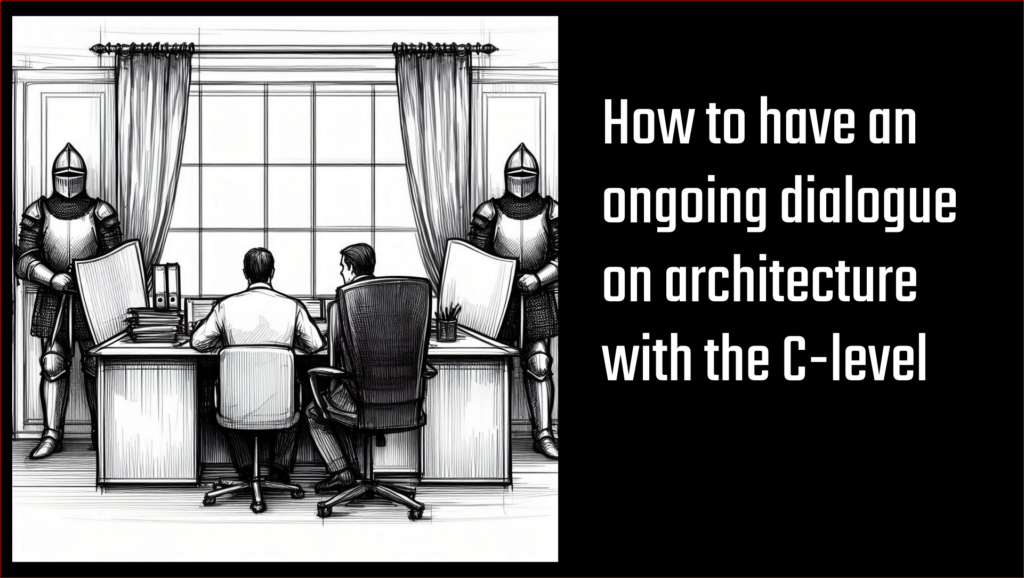In a recent post I discussed how to engage the C-level in a dialogue. The next question is how to keep them engaged and motivate them to co-create end products.
Creating understanding
Making sure that the CXO understands the implications is critical and should be a key objective of any additional meeting. When the initial understanding is that the project will “only update the ecommerce-System” it is critical to create the understanding that this project will potentially re-define the interaction model between stores and ecommerce, might introduce large changes in the supply chain management and overall impact the business model to an extend that C-level involvement is definitely required.
From a more practical point of view it is helpful to foster understanding that the architecture changes will lead to a different distribution of resources, IT budget and requirements towards the few business-resources that are process experts. This is most of the time an additional incentive for these stakeholders to join the conversation.
Creating engagement
Every meeting that you have with a C-level executive should be a decision meeting. If you don’t need a decision or at least guidance – cancel the meeting and give back some time. You can send a status report by mail – this does not require a meeting.
Going into a meeting just to show off results is the quickest way to end any kind of engagement and might make it very difficult to get any further interaction points. Most senior executives will consider their time quite precious and if a meeting is not creating any impact in the outside world they won’t value it very much.
Here are a few ways to create engagement:
Formal decisions: This is the easiest one. You need formal approval and 500.000 USD to start a new project. Prepare the meeting well, create different options and have a good conversation. However, normally only very few meetings fall into this category.
Excluding options: Maybe you are working towards a larger decision point and are not yet ready to discuss the final set of options. In such a situation it can be extremely beneficial for your work and can be an engaging discussion with your stakeholder to cross out some alternatives that would create a lot of work.
Maybe a full outsourcing of the entire IT organization would be a theoretical option but there are good reasons to not analyze this option in further detail. This would make an excellent discussion topic with the final decision to narrow down the solution space.
Guidance: Sometimes you do not aim for a formal and final decision (which that one stakeholder on its own could also not provide). Then getting some directional guidance can be a good replacement for a real decision.
If you for example pursue three different vendors and get some guidance regarding the reasoning of the CXO in charge of that business area you might be able to double-down with reference checks and a due diligence for one vendor.
Summary
To sum it up: If you want a single CXO or a group like the entire board to engage, give them an active role. Make sure they have all the necessary information to take a decision and that they have something to do.
